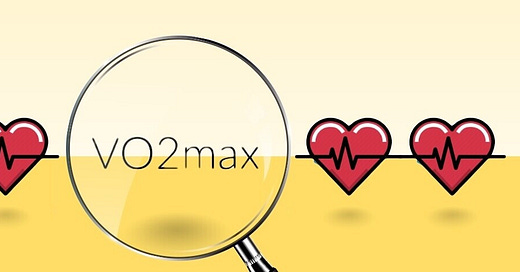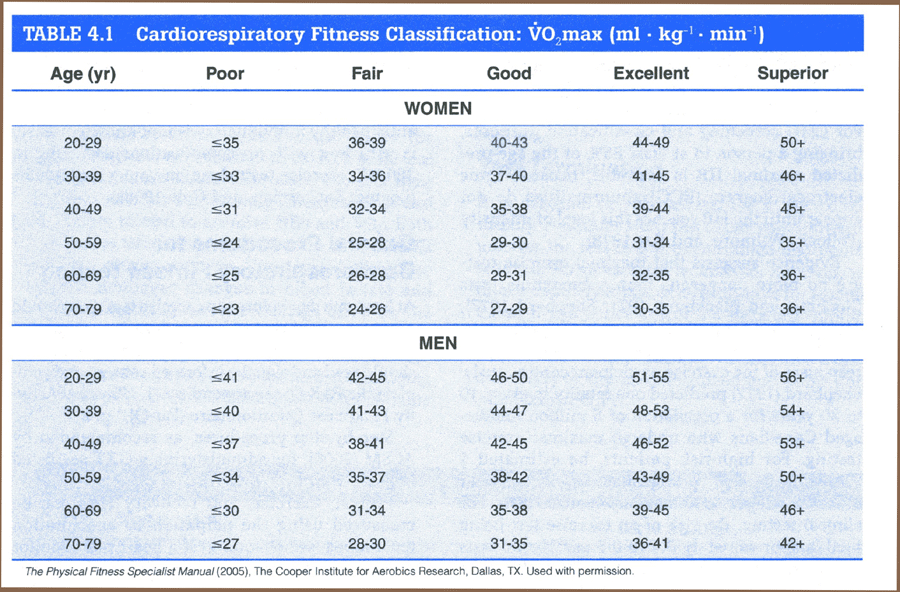Measure Aerobic Fitness with this Simple Single Stage Treadmill Test
February is American Heart Month
February brings a lot of heart. Valentine’s Day 💘. And February is American Heart Month. However, this four chambered pump needs to efficiently and effectively work all the time - not just in February - for good health.
VO2 max - a Clinic Vital Sign
Although there are a lot of measures of heart health - resting heart rate, heart rate variability (HRV) EKG activity, ejection fraction, coronary artery calcification, etc., a lot of exercise physiologists will tell you that VO2 max - the maximal oxygen consumption - is a hallmark and robust measure of cardiovascular (and aerobic) fitness. In fact, the evidence of research linking aerobic fitness with heart disease and other chronic diseases is so strong that the American Heart Association suggests that aerobic fitness be considered a clinical vital sign. The acknowledgement for the the importance of an acceptable level, or moreso high VO2 max has also been raised in the last few years by popular longevity docs like Peter Attia and others.
Measure What Matters
The book, Measure What Matters by John Doerr, focuses on strategic planning. We can argue that an individual’s strategic plan for health and longevity should include the measurement of VO2 max given its robust impact on overall fitness, health and well-being.
The gold standard test of VO2max is conducted in a lab or clinic with sophisticated equipment Maximal oxygen consumption (VO2 max) is widely recognized as one of the best indices to measure aerobic fitness. It can be measured objectively and reliably in the laboratory, through direct analysis of the gases involved in respiration, while performing progressive and maximal tests on various ergometers like the treadmill or cycle.
However, due to the cost, use of sophisticated equipment, need for trained staff to administer the test, and time demand for each evaluation, its use becomes somewhat limited.
Due to these limitations of laboratory-measured VO2 max, submaximal field tests - like the 1-mile run or the "beep" test, are becoming an alternative for the evaluation of aerobic fitness. These test use data such as heart rate, time to complete the 1-mile run, etc. to predict VO2 max using a statistical regression model (i.e., prediction equation).
Here, I want to share a very simple, convenient and accurate walking or jogging treadmill test that can be used to assess aerobic fitness.
The Single Stage Treadmill Test
Recently, I have been using a very simple single stage treadmill test to monitor my aerobic fitness. This can be done either walking or jogging. Below are the protocols.
Single Stage Walking Test (Ebbeling Med Sci Sports Exerc 1991)
This test was derived from a population of healthy men and women aged 20-59, and is not appropriate for very fit or very unfit runners. Accuracy may be poor if used in other populations as it has not been validated in other demographics. Accuracy is improved if the submaximal heart rate achieved during testing is closer to 60% of the person's maximal HR.
Equipment: Treadmill and a heart rate monitor (chest strap, Applewatch, or electrical pads on treadmill handlebar).
Familiarization stage (if needed): Set the treadmill to 1.7 mph at a 0% incline and start your stopwatch. Allow the person to familiarize themself with the treadmill at 1.7 mph for 1 or 2 min.
Warm-up stage: achieve a steady heart rate of 50-70% of the HRmax (220-age) at a 0% grade. This will likely occur at a speed of 2.0 to 4.5 mph.
Testing stage: keep the same speed, increase incline by 5%. A steady state heart rate at this incline needs to be achieved. Take a pulse during the 3rd and the 4th minute to ensure there is not a difference of >5bpm. Heart rate should be higher than 110 bpm.
Use the following prediction equation to determine the estimated VO2 max
Estimated VO2 max (ml/kg/min) =15.1 +(21.8*speed) - (0.327* HR) - (0.263 * (speed*age)) + (0.00504* (HR*age)) + (5.98*gender)
Single Stage Jogging Test (Vehrs et al. Measurement in Physical Education and Exercise Science, 2007)
Equipment: Treadmill and a heart rate monitor (chest strap, Applewatch, or electrical pads on treadmill handlebar).
Warm-up stage: Begin walking at 2.5-3.2 mph at level grade for 3 min for a warm-up.
Testing stage: Then begin jogging at a self-selected speed between 4.3 and 7.5 mph at level grade for 3 min. This speed should elicit of heart rate between 60-80% of heart rate max - example, 30 yr old with estimated max heart rate of 190 (220-age) should be at heart rate of 114-152 during the test (190 x .6 114; 190 x .8=152). Record the heart rate at the 2 min, 2:30, and 3:00 min marks. The last two consecutive heart rates should not differ by 3 bpm.
Use the following prediction equation to determine the estimated VO2 max
Estimated VO2 max (ml/kg/min) = 58.687 + (7.520 × Gender; 0 = woman and 1 = man) + (4.334 × speed) − (0.211 × body weight, kg) − (0.148 × HR) − (0.107 × Age)
Results: What’s a good Vo2max?
Here are my results from recent tests. I have also conducted a real-deal, laboratory VO2 max test using indirect calorimetry (shown above) and produced a value of 44.2 ml/kg/min showing pretty good accuracy of the single state test and prediction equations. (P.S. I programmed the equations from above into a Google Sheet for easy calculations.)
Of course, the next question becomes - “is that good?”
I will post here two sets of reference values based on age and gender. The first are the widely used (historical) reference values from the Cooper Clinic.
The second are updated and perhaps more robust values from 34 labs called FRIEND (Fitness Registry and the Importance of Exercise National Database). These are now becoming more widely used in clinical medicine and beyond.
One final thing that is worth mentioning. Peter Attia talks a lot about the ‘marginal decade’. That last decade of life and what level of functioning and quality of life you will possess. So, instead of comparing your values to your age bracket, go back one or even two age brackets.
How do you measure up? Take the test. It’s simple……but well worth the information. What gets measured, matters!!









